
La Valenciana: A Journey into Guanajuato's Golden Era
Discover La Valenciana in Guanajuato, Mexico: A historical neighbourhood where the echoes of the 18th-century silver boom come alive amidst stunning architecture and cultural charm.
Nestled in the heart of Guanajuato, La Valenciana is a neighbourhood that echoes with the rich history of Mexico's mining boom. Known for its historical significance, this area is home to one of the richest silver mines in the world, which played a pivotal role in the region's prosperity during the 18th century. Today, La Valenciana stands as a testament to this golden era, offering visitors a blend of historical sites, cultural experiences, and natural beauty. The neighbourhood's centerpiece is the majestic La Valenciana Church, also known as the San Cayetano Church. This stunning Baroque masterpiece, built with funds from the lucrative silver mines, showcases intricate altarpieces and ornate carvings that captivate every visitor. As you explore the church, you'll find yourself transported back in time, marveling at the artistry and dedication of its creators. In addition to its historical landmarks, La Valenciana offers a range of activities for modern-day adventurers. The nearby Valenciana Mine, open for guided tours, provides an immersive experience into the life of miners and the history of silver extraction. Walking through the mine's tunnels, you'll gain a firsthand understanding of the challenges and triumphs faced by those who toiled here centuries ago. For those seeking a more leisurely experience, the neighbourhood's charming streets are lined with quaint shops and local eateries. Here, you can sample traditional Mexican cuisine, pick up unique souvenirs, and interact with the friendly locals who are always eager to share their stories. Whether you're a history buff, a culture enthusiast, or simply looking to unwind, La Valenciana promises a memorable experience that will leave you enchanted with Guanajuato's rich heritage.
Local tips in La Valenciana
- Visit La Valenciana Church early in the morning to avoid crowds and fully appreciate its beauty.
- Wear comfortable shoes for the mine tour as the terrain can be uneven and slippery.
- Try the local dish 'enchiladas mineras,' a traditional meal inspired by the miners' diet.
- Bring a camera to capture the picturesque views and stunning architecture.
- Check the local calendar for cultural events and festivals that often take place in the neighbourhood.
La Valenciana: A Journey into Guanajuato's Golden Era
Nestled in the heart of Guanajuato, La Valenciana is a neighbourhood that echoes with the rich history of Mexico's mining boom. Known for its historical significance, this area is home to one of the richest silver mines in the world, which played a pivotal role in the region's prosperity during the 18th century. Today, La Valenciana stands as a testament to this golden era, offering visitors a blend of historical sites, cultural experiences, and natural beauty. The neighbourhood's centerpiece is the majestic La Valenciana Church, also known as the San Cayetano Church. This stunning Baroque masterpiece, built with funds from the lucrative silver mines, showcases intricate altarpieces and ornate carvings that captivate every visitor. As you explore the church, you'll find yourself transported back in time, marveling at the artistry and dedication of its creators. In addition to its historical landmarks, La Valenciana offers a range of activities for modern-day adventurers. The nearby Valenciana Mine, open for guided tours, provides an immersive experience into the life of miners and the history of silver extraction. Walking through the mine's tunnels, you'll gain a firsthand understanding of the challenges and triumphs faced by those who toiled here centuries ago. For those seeking a more leisurely experience, the neighbourhood's charming streets are lined with quaint shops and local eateries. Here, you can sample traditional Mexican cuisine, pick up unique souvenirs, and interact with the friendly locals who are always eager to share their stories. Whether you're a history buff, a culture enthusiast, or simply looking to unwind, La Valenciana promises a memorable experience that will leave you enchanted with Guanajuato's rich heritage.
Iconic landmarks you can’t miss
Casa de los Lamentos
Explore the captivating Casa de los Lamentos in Guanajuato, a museum filled with history, culture, and enchanting stories that resonate through time.

Museo Mina Valenciana 1791
Explore the fascinating history of silver mining at Museo Mina Valenciana 1791, a captivating museum in the heart of Guanajuato, Mexico.

Museo De Sitio Valenciana
Explore the Museo De Sitio Valenciana in Guanajuato, a captivating museum that unveils the rich history of silver mining and its impact on the region.
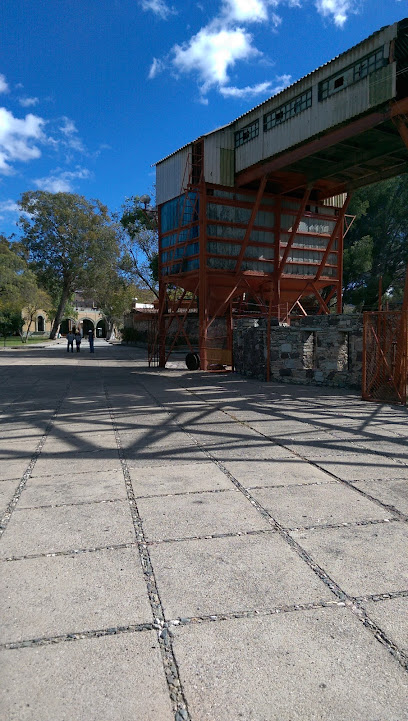
Mina La Valenciana
Explore the fascinating history of silver mining at Mina La Valenciana, a captivating tourist attraction in the heart of Guanajuato, Mexico.
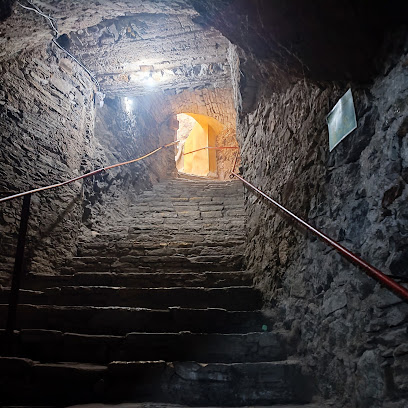
Valenciana Dia del minero
Explore the fascinating history of mining at Valenciana Dia del Minero, a must-visit museum in Guanajuato showcasing rich cultural heritage.
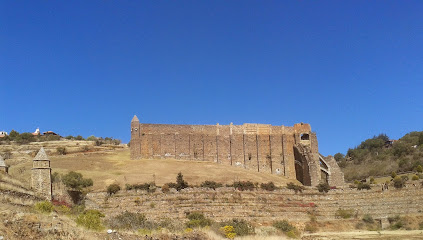
Unmissable attractions to see
Monumento Al Pipila
Discover the breathtaking views and historical significance of Monumento Al Pipila, a must-see attraction in Guanajuato, Mexico.

Museo ex Hacienda del Cochero
Discover the fascinating history of Guanajuato at Museo ex Hacienda del Cochero, a captivating museum that showcases local traditions and heritage.

Diego Rivera's House Museum
Dive into the artistic world of Diego Rivera at his childhood home, a vivid museum showcasing his early life and iconic works in Guanajuato.

Unión Garden
Unión Garden: A vibrant oasis in Guanajuato, where nature, culture, and relaxation intertwine in a stunning urban setting.

Parador Turistico Sangre de Cristo
Experience the breathtaking views and rich culture at Parador Turistico Sangre de Cristo, a hidden gem in Guanajuato, Mexico.

Museo Casa El Purgatorio
Visit Museo Casa El Purgatorio to discover the rich cultural heritage and fascinating history of Guanajuato through captivating exhibits and stunning architecture.

Museo Mina Valenciana 1791
Uncover the fascinating history of silver mining at Museo Mina Valenciana 1791, a captivating museum in Guanajuato showcasing rich heritage and artifacts.

Museo De Sitio Valenciana
Explore the rich mining heritage of Guanajuato at Museo De Sitio Valenciana, a captivating museum filled with historical artifacts and engaging exhibits.

Mina La Valenciana
Explore the captivating history and stunning architecture of Mina La Valenciana, a premier tourist attraction in Guanajuato, Mexico.

Essential places to dine
Casa Valadez · Anfitrión & Gourmet
Discover Casa Valadez in Guanajuato – where traditional Mexican flavors meet gourmet dining in an enchanting atmosphere.

Restaurant de la Sierra
Experience authentic Mexican cuisine at Restaurant de la Sierra in Guanajuato—where flavors meet breathtaking views.
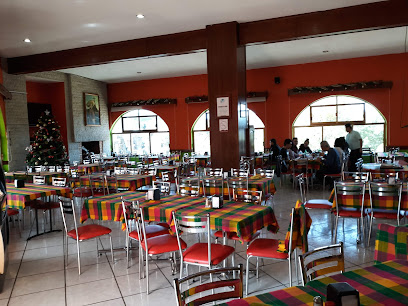
La Tasca De La Paz Guanajuato
Experience authentic Mexican and Spanish cuisine at La Tasca De La Paz in Guanajuato – a culinary gem offering delightful dishes in a vibrant atmosphere.

Restaurante Casa Mercedes
Discover the heart of Mexican cuisine at Restaurante Casa Mercedes in Guanajuato - where tradition meets flavor in every dish.

El Jardín de los Milagros
Experience exceptional dining at El Jardín de los Milagros in Guanajuato—where exquisite flavors meet breathtaking views.

Mariscos La curva
Discover authentic seafood delights at Mariscos La Curva in Valenciana - a culinary treasure in Guanajuato's vibrant dining scene.
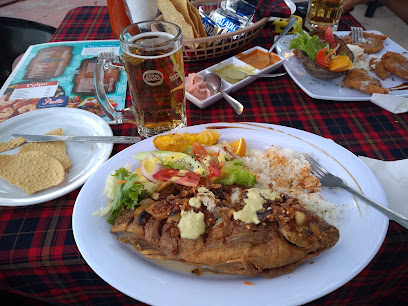
La Taberna de Diego y Frida Restaurant-Bar
Experience the vibrant fusion of Mediterranean and Mexican flavors at La Taberna de Diego y Frida in the heart of Guanajuato.

Itacate Puerto Interior
Discover authentic Mexican flavors at Itacate Puerto Interior in Guanajuato - where tradition meets deliciousness in every bite.

Restaurante La Gloria
Experience authentic Mexican cuisine at Restaurante La Gloria in Guanajuato's beautiful Valenciana neighborhood.

Valenciana comida del Minero
Discover authentic Mexican cuisine at Valenciana Comida del Minero in Guanajuato—where tradition meets flavor in every dish.
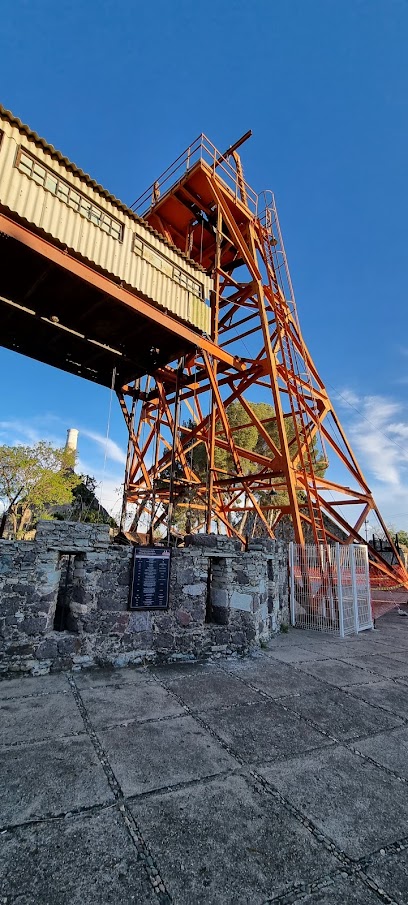
Markets, malls and hidden boutiques
Altacia Mall
Explore Altacia Mall in León, Mexico – a vibrant shopping haven with top brands, diverse dining, and entertainment for the whole family.

MULZA Footwear Outlet
Explore unbeatable deals on footwear at MULZA Footwear Outlet in León, a vibrant shopping destination for every style and budget.

Fabrica la Aurora
Explore Fabrica la Aurora, a vibrant art center in San Miguel de Allende, featuring galleries, antique shops, and artisan cafes for an unforgettable experience.

Zona Piel
Explore Zona Piel, León's premier outlet mall, renowned for exquisite leather craftsmanship and a unique shopping experience.

Museo Mina Valenciana 1791
Discover the rich mining history and cultural heritage of Guanajuato at Museo Mina Valenciana 1791, an essential stop for history enthusiasts.
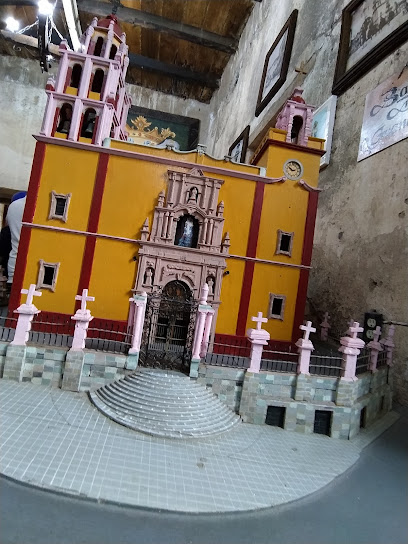
condon parchis sex shop
Discover Guanajuato's vibrant Condon Parchis Sex Shop, offering unique adult products, lingerie, and gifts for a memorable shopping experience.

Freiche Perfumería
Discover exquisite fragrances and delightful gifts at Freiche Perfumería, León's premier destination for unique perfumes and local treasures.

The Gorky Gonzalez Workshop
Explore the artistic essence of Guanajuato at The Gorky Gonzalez Workshop, where handmade pottery meets local craftsmanship in a vibrant gift shop atmosphere.

OXXO
Discover convenience at OXXO in Silao, the ideal spot for snacks, drinks, and travel essentials while exploring Guanajuato.

La Valenciana Curiosidades
Explore La Valenciana Curiosidades, a unique novelty store in Guanajuato filled with local crafts and delightful surprises.

Mina La Valenciana
Explore the rich heritage of Guanajuato at Mina La Valenciana, a historic silver mine offering breathtaking views and captivating tours.
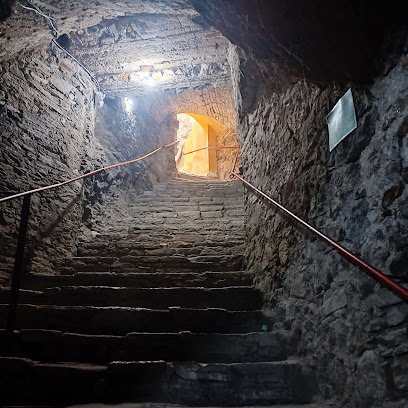
La Cochera
Explore local flavors at La Cochera, where Guanajuato's culinary treasures come to life in a charming grocery store setting.

Tienda de regalos y accesorios silao. Arfema
Explore authentic Mexican crafts and unique souvenirs at Tienda de Regalos y Accesorios Silao, where local artistry meets unforgettable shopping.

Dulceria la mina
Explore Dulceria la Mina, a charming gift shop in Guanajuato offering traditional sweets and unique handcrafted souvenirs that embody local culture.

Chácharas, chivas y cachivaches
Explore the eclectic charm of Chácharas, Chivas y Cachivaches, a must-visit gift shop in Guanajuato, filled with unique souvenirs and local art.
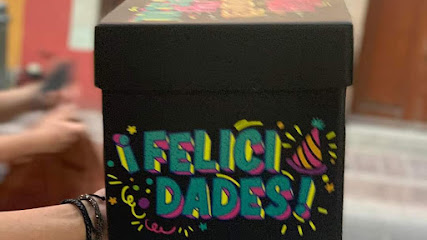
Essential bars & hidden hideouts
Oveja Negra Bar
Discover the lively Oveja Negra Bar in Guanajuato, where unforgettable nights and delicious drinks await in a vibrant atmosphere.

Vanilla Bar
Discover the vibrant nightlife of Guanajuato at Vanilla Bar, where delicious cocktails and a lively atmosphere await every visitor.

La Antigua
Experience the vibrant nightlife at La Antigua, a charming bar in Guanajuato's Zona Centro, offering a delightful selection of local and international drinks.

Fante Bar
Experience the vibrant nightlife of Guanajuato at Fante Bar, where local flavors and a lively atmosphere await you.

SKY BAR TERRASSE
Experience breathtaking views and a vibrant atmosphere at SKY BAR TERRASSE, the ultimate rooftop bar in Guanajuato.

Bar Fly
Experience the pulse of Guanajuato's nightlife at Bar Fly, where vibrant music and delicious drinks create an unforgettable atmosphere.

La Clandestina
Discover La Clandestina, a vibrant bar in Guanajuato offering a lively atmosphere, diverse drinks, and a taste of local culture perfect for tourists.

ONE BAR&LOUNGE
Experience the vibrant nightlife of Guanajuato at ONE BAR&LOUNGE, where great drinks meet a warm atmosphere in the heart of the city.
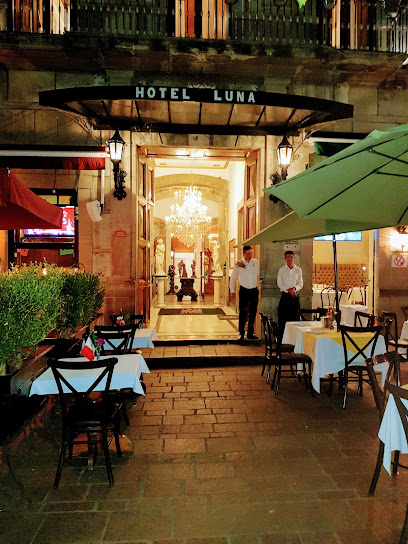
Mezcal Bar El Fusilado
Discover the essence of Mexico at Mezcal Bar El Fusilado, where authentic mezcal and vibrant culture come together in Guanajuato.

La Uni Coworking & Fun Guanajuato
Experience the lively blend of coworking and culinary delights at La Uni Coworking & Fun in Guanajuato, where every visit is a new adventure.

Local Phrases
-
- HelloHola
[oh-lah] - GoodbyeAdiós
[ah-dee-ohs] - YesSí
[see] - NoNo
[noh] - Please/You're welcomePor favor/De nada
[por fah-vor/deh nah-dah] - Thank youGracias
[grah-see-ahs] - Excuse me/SorryPerdón/Lo siento
[pehr-dohn/loh see-ehn-toh] - How are you?¿Cómo estás?
[koh-moh ehs-tahs] - Fine. And you?Bien. ¿Y tú?
[byen. ee too] - Do you speak English?¿Hablas inglés?
[ah-blahs een-glays] - I don't understandNo entiendo
[noh ehn-tee-ehn-doh]
- HelloHola
-
- I'd like to see the menu, pleaseMe gustaría ver el menú, por favor
[meh goos-tah-ree-ah behr ehl meh-noo, por fah-vor] - I don't eat meatNo como carne
[noh koh-moh kahr-neh] - Cheers!¡Salud!
[sah-lood] - I would like to pay, pleaseMe gustaría pagar, por favor
[meh goos-tah-ree-ah pah-gahr, por fah-vor]
- I'd like to see the menu, pleaseMe gustaría ver el menú, por favor
-
- Help!¡Ayuda!
[ah-yoo-dah] - Go away!¡Vete!
[veh-teh] - Call the Police!¡Llama a la policía!
[yah-mah ah lah poh-lee-see-ah] - Call a doctor!¡Llama a un doctor!
[yah-mah ah oon dohk-tohr] - I'm lostEstoy perdido/a
[ehs-toy pehr-dee-doh/ah] - I'm illEstoy enfermo/a
[ehs-toy ehn-fehr-moh/ah]
- Help!¡Ayuda!
-
- I'd like to buy...Me gustaría comprar...
[meh goos-tah-ree-ah kohm-prahr] - I'm just lookingSólo estoy mirando
[soh-loh ehs-toy mee-rahn-doh] - How much is it?¿Cuánto cuesta?
[kwan-toh kwehs-tah] - That's too expensiveEso es muy caro
[eh-soh ehs mwee kah-roh] - Can you lower the price?¿Puedes bajar el precio?
[pweh-dehs bah-har ehl pree-syoh]
- I'd like to buy...Me gustaría comprar...
-
- What time is it?¿Qué hora es?
[keh oh-rah ehs] - It's one o'clockEs la una
[ehs lah oo-nah] - Half past (10)Y media (10)
[ee meh-dee-ah (deez)] - MorningMañana
[mah-nyah-nah] - AfternoonTarde
[tahr-deh] - EveningNoche
[noh-cheh] - YesterdayAyer
[ah-yehr] - TodayHoy
[oy] - TomorrowMañana
[mah-nyah-nah] - 1Uno
[oo-noh] - 2Dos
[dohs] - 3Tres
[trehs] - 4Cuatro
[kwah-troh] - 5Cinco
[seen-koh] - 6Seis
[says] - 7Siete
[see-eh-teh] - 8Ocho
[oh-choh] - 9Nueve
[nweh-veh] - 10Diez
[dee-ehs]
- What time is it?¿Qué hora es?
-
- Where's a/the...?¿Dónde está...?
[dohn-deh ehs-tah] - What's the address?¿Cuál es la dirección?
[kwal ehs lah dee-rehk-syon] - Can you show me (on the map)?¿Puedes mostrarme (en el mapa)?
[pweh-dehs mohs-trar-meh (ehn ehl mah-pah)] - When's the next (bus)?¿Cuándo es el próximo (autobús)?
[kwan-doh ehs ehl proh-ksee-moh (ah-oo-toh-boos)] - A ticket (to ....)Un boleto (a ....)
[oon boh-leh-toh (ah)]
- Where's a/the...?¿Dónde está...?
History of La Valenciana
-
La Valenciana rose to prominence in the late 16th century, primarily due to the discovery of rich silver deposits in the area. The Valenciana mine, discovered in 1558, became one of the most productive mines in the world, significantly contributing to Guanajuato's wealth and status during the colonial period. This influx of silver helped fund Spain's global empire and established Guanajuato as a major economic center.
-
The wealth generated from the mines led to the construction of stunning colonial architecture in La Valenciana. Notable buildings include the exquisite *Templo de San Cayetano*, built in the 18th century, which showcases a breathtaking baroque style. The church is adorned with gold leaf and intricate carvings, symbolizing the opulence brought by the mining industry. The architectural legacy of this period remains a significant draw for tourists and historians alike.
-
La Valenciana became a cultural melting pot due to the influx of miners and merchants from various regions. This diversity fostered a rich cultural tapestry that blended indigenous, Spanish, and African influences. The local traditions, music, and cuisine reflect this vibrant mix, making La Valenciana a unique representation of Guanajuato’s cultural heritage.
-
By the 19th century, the once-thriving mines of La Valenciana began to decline due to resource depletion and political instability. The Mexican War of Independence and subsequent conflicts further impacted the mining operations, leading to a gradual abandonment of the area. Many of the grand colonial buildings fell into disrepair, yet their historical significance continued to resonate within Guanajuato.
-
In recent years, La Valenciana has seen efforts focused on restoration and preservation of its historical sites. The *Templo de San Cayetano* and other colonial structures have undergone renovations to maintain their integrity and promote heritage tourism. These initiatives aim to celebrate La Valenciana's rich history and ensure that the stories of its silver mining legacy are passed on to future generations.
La Valenciana Essentials
-
La Valenciana is easily accessible from the main neighborhoods of Guanajuato. If you're coming from the city center, you can take a taxi or an Uber, which typically costs around 60-80 pesos and takes about 10-15 minutes. Alternatively, local buses operate frequently between the center and La Valenciana, with the fare being approximately 10 pesos. For those driving, the neighborhood is well-signposted, and there is available parking near major attractions.
-
La Valenciana is a compact neighborhood, making it ideal for exploration on foot. Walking allows you to fully appreciate the colonial architecture and scenic views. If you prefer a quicker mode of transport, local taxis are readily available and inexpensive. Bicycle rentals are also a popular option, with several shops offering bikes for rent. However, be cautious on the hilly terrain, as some paths may be steep.
-
La Valenciana is generally safe for tourists, but standard precautions should be observed. Avoid wandering alone at night, particularly in less populated areas. While most crime targeting tourists is low, areas near the outskirts of La Valenciana may have higher incidents of petty theft. Always stay aware of your surroundings and keep valuables secure.
-
In case of an emergency, dial 911 for immediate assistance. The local police station is located in the city center, and there are medical facilities available. It's advisable to carry a copy of your passport and emergency contact numbers. Pharmacies in the area can provide over-the-counter medications for minor health issues.
-
Fashion: Do dress modestly, particularly when visiting churches or religious sites. Avoid wearing overly casual or revealing clothing. Religion: Do respect local customs; if visiting a church, cover your shoulders and knees. Public Transport: Do give priority to the elderly and refrain from loud conversations. Don't eat or drink on the buses. Greetings: Do greet locals with a friendly 'buenos días' or 'buenas tardes'. Eating & Drinking: Do try local dishes like enchiladas and pozole. Don't refuse food or drink offered to you, as it can be seen as impolite.
-
To experience La Valenciana like a local, visit the historic mine, La Valenciana Mine, where you can learn about the mining history of the region. Don't miss the local artisan shops; they sell unique handicrafts that make great souvenirs. Engage in conversations with shop owners or locals; they often have fascinating stories about the area's history. For a unique experience, try to attend local festivals or events, as they showcase traditional music and dance.
Nearby Cities to La Valenciana
-
Things To Do in San Miguel de Allende
-
Things To Do in Queretaro
-
Things To Do in Guadalajara
-
Things To Do in Ixtapa-Zihuatanejo
-
Things To Do in Mexico City
-
Things To Do in Taxco
-
Things To Do in Puerto Vallarta
-
Things To Do in Puebla
-
Things To Do in Acapulco
-
Things To Do in Monterrey
-
Things To Do in Veracruz
-
Things To Do in McAllen
-
Things To Do in Matamoros
-
Things To Do in Brownsville
-
Things To Do in Oaxaca





